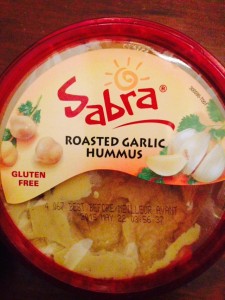I’m collaborating with Matt Shipman, public information officer at NC State University and curator of The Abstract, on a set of food safety-related posts from other NCSU folks as we roll toward WHO’s World Health Day on April 7– which is focused this year on food safety. Here’s a post on Vibrio in shelfish by Liz Bradshaw, a postdoctoral research scholar in NoroCORE – the Norovirus Collaborative for Outreach, Research, and Education, based at NC State.
People around the world are eating more and more seafood, and if you’re from the southeastern United States, oysters and other shellfish are a desirable delicacy for many. Most people are aware that eating raw or undercooked seafood can put them at risk for food-related illness, and while they have seen the warnings on restaurant menus, but may not know the specific microbes to blame. This post focuses on what is arguably the most important pathogen found in seafood (which is also on the rise) – Vibrio bacteria.
Vibrio refers to a genus of Gram-negative, rod-shaped bacteria, and they are found naturally in brackish and saltwater environments, as they need salt to survive and grow. They also like to multiply in warm water, and the majority of human cases happen in the summer months. Out of around a dozen Vibrio species that cause disease in people, two species – V. parahaemolyticus and V. vulnificus– are most often associated with eating raw or undercooked seafood, particularly molluscan shellfish (oysters, clams, mussels, and cockles). These bacteria can also enter through a wound or by ingesting seawater, but these cases are less common.
V. parahaemolyticus usually causes watery diarrhea, vomiting, and abdominal pain, sometimes with a fever and chills. People are usually sick for three days, and though unpleasant, the majority of people recover just fine, without needing prescription medications. The CDC estimates there are 35,000 V. parahaemolyticus cases a year in the United States.
V. vulnificus is a rarer but more sinister creature, and is often associated with fatalities. Most people with V. vulnificus experience symptoms similar to V. parahaemolyticus, but the bacteria are a particular threat to those who are immunocompromised or have underlying health conditions such as liver disease, diabetes, or cancer. In these patients, the bacteria can enter the bloodstream (septicemia), causing severe fever, skin lesions, and shock. Around 50 percent of these patients die, and that is often in the face of aggressive antibiotic treatment and supportive care, which is more than a little scary. V. vulnificusinfection is, however, a rare disease; there are only about 30 cases a year in the United States.
The incubation periods (the time between eating the contaminated shellfish and becoming sick) are quite different for the two bacteria. V. parahaemolyticus starts making itself known around two to 48 hours after exposure, while V. vulnificus takes one to seven days. A clinical diagnosis using bacterial culture is still needed to be sure Vibrio is the culprit, in large part because symptoms like nausea and vomiting, and even the more severe septicemia, can be caused by a wide variety of microbes.
 Unfortunately, Vibrio cases have been on the rise, and according to the CDC’s most recent Food Safety Progress Report, we saw a 75 percent increase in cases in 2013 compared to 2006-2008, and a 32 percent increase compared to 2010-2012 in the United States. The majority of these 2013 cases (62 percent, or 144 cases) were V. parahaemolyticus, and 9 percent (21 cases) were V. vulnificus. It is also believed that for every V. parahaemolyticus case that is reported, there are 142 cases that go undiagnosed. This is probably due to an underreporting of cases, as many laboratories do not use the special culture media needed to grow the bacteria. To improve our understanding of the impacts these bacteria, Vibrio infections were made a notifiable disease in 2007, which means that lab-confirmed cases have to be reported to the state health departments, which then inform the CDC. Unfortunately, we know considerably less about the significance of Vibrio infections in other parts of the world.
Unfortunately, Vibrio cases have been on the rise, and according to the CDC’s most recent Food Safety Progress Report, we saw a 75 percent increase in cases in 2013 compared to 2006-2008, and a 32 percent increase compared to 2010-2012 in the United States. The majority of these 2013 cases (62 percent, or 144 cases) were V. parahaemolyticus, and 9 percent (21 cases) were V. vulnificus. It is also believed that for every V. parahaemolyticus case that is reported, there are 142 cases that go undiagnosed. This is probably due to an underreporting of cases, as many laboratories do not use the special culture media needed to grow the bacteria. To improve our understanding of the impacts these bacteria, Vibrio infections were made a notifiable disease in 2007, which means that lab-confirmed cases have to be reported to the state health departments, which then inform the CDC. Unfortunately, we know considerably less about the significance of Vibrio infections in other parts of the world.
For the love of the food, oyster aficionados have created some interesting myths on how to reduce their risk of disease from eating raw oysters, such as the notion that covering the oysters in hot sauce will kill bacteria. The old adage about only eating oysters in months containing an “R” has been around since the 1500’s, and while the V. vulnificus levels in water are higher in the summer months, the CDC says that 40 percent of cases actually occur in the R-containing months between September and April. Similarly, some people think they can tell when an oyster is not safe to eat, but Vibrio bacteria do not change the taste, smell, or appearance of shellfish.
Thankfully, the bacteria are quite susceptible to heat. People can reduce their risk of infection by ordering cooked oysters when they go to restaurants, or when preparing oysters at home, to follow a few simple precautions, which are outlined at Foodsafety.gov.
References:
CDC. 2014. Notes from the Field: Increase in Vibrio parahaemolyticus Infections Associated with Consumption of Atlantic Coast Shellfish – 2013. MMWR 63(15): p. 335-336. Accessed at http://www.cdc.gov/mmwr/preview/mmwrhtml/mm6315a6.htm?s_cid=mm6315a6_x
CDC. 2014. Incidence and Trends of Infection with Pathogens Transmitted Commonly Through Food – Foodborne Diseases Active Surveillance Network, 10 U.S. Sites, 2006–2013. MMWR 63(15): 328 – 332. Accessed at http://www.cdc.gov/mmwr/preview/mmwrhtml/mm6315a3.htm?s_cid=mm6315a3_w
CDC. 2015. Vibrio illness (Vibriosis). Accessed at http://www.cdc.gov/vibrio/
FDA. 2014. Raw Oyster Myths. Accessed at http://www.fda.gov/Food/ResourcesForYou/HealthEducators/ucm085385.htm
Foodsafety.gov. 2015. Vibrio infections. Accessed at http://www.foodsafety.gov/poisoning/causes/bacteriaviruses/vibrio_infections/
 The company recalled some 128,000 340-milliliter cartons of “melon milk” after the company received a lab report indicating the presence of the bacterium.
The company recalled some 128,000 340-milliliter cartons of “melon milk” after the company received a lab report indicating the presence of the bacterium.




 Have they validated their sanitation procedures?
Have they validated their sanitation procedures?





